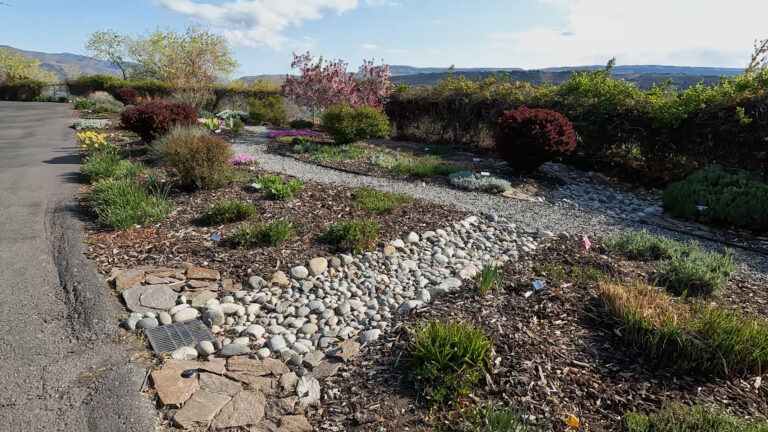
Preparing your Northwest garden for spring
Read
In the dark days of winter, it’s never too early to start thinking about what to plant in your garden this upcoming season.
With the new year underway, garden experts like Tim Kohlhauff, an urban horticulture coordinator at Washington State University Extension, have some tips.
Mulching
As colder temperatures set in, Kohlhauff said that mulching is a great way to protect plants during the winter if you haven’t already done so.
“Like anything, like chocolate, there can be too much of a good thing,” he said. “You only want to go 2 to 4 inches of mulch, depending on what you’re using.”
For more finely shredded mulch, Kohlhauff recommends leaning toward the 2 inch mark. For wood chips, 4 inches is a good benchmark. He also recommends giving plants some breathing room by not mulching right up against tree or shrub trunks.
Kohlhauff said to make sure to mulch anything planted in the last growing season. That’ll make it more likely to survive the winter.
“Sometimes that first winter is a little harder on it,” Kohlhauff said. “They’re not as cold hardy as they will be when they’re fully mature.”
Soil prep
If you’re in an area where the soil hasn’t frozen yet, Kohlhauff said there are some steps to enrich the soil for the upcoming growing season. Leaf mulches and compost can be put on the top of vegetable garden beds to protect the soil.
“Covering your soil is a good idea to protect it over the winter, because we depend a lot on the little soil microbes,” Kohlhauff said.
He also recommends soil testing. Some labs will give specific instructions on how to take samples. But generally, Kohlhauff said you’ll want a good mix of soil from different areas where you’re growing, digging down at least as deep as the roots. Here’s a helpful step-by-step video from Oregon State University.
Pruning
Kohlhauff added that winter is a great time to prune many plants.
“With all the leaves off of trees and shrubs, you can really see the structure of it, and see what might need to be pruned,” he said.
However, some plants, like forsythia or lilacs, bloom early in the spring. They’ve already set their flower buds, and Kohlhauff said you might lose some of those flowers if you prune now.
Water
It can be easy to believe plants get all the water they need through the winter months, but Kohlhauff said that’s actually not the case.
“Believe it or not, one of the things that’s really damaging to young trees and shrubs is that they run out of water in the winter because the soil is frozen,” he said. “They can’t get more water into the plant, but they’re still losing it out of the pores in their leaves and branches.”
Kohlhauff said for young trees, consider trunk guards that can be wrapped around the plant. Keep them on during the cold months, and remove them as it starts to warm up in the spring. He also recommends guard colors, such as white, to reflect heat.
“You don’t want to get a lot of heat next to the trunk of your tree, ’cause you don’t want to warm up the trunk,” he said. “When the sun goes down, then all of a sudden it gets really cold, and that swing in temperature causes splits in the bark.”
Pests
Deer are known for turning to gardens when they need a snack. Kohlhauff said there are lists of plants that are more deer-resistant. But he also acknowledged that wildlife can try unexpected things.
“I always tell people, the deer don’t read the lists,” he said. “They will sometimes try things, or even like things, that are on the list of deer-resistant plants.”
It’s not just deer — voles and pocket gophers can do their share of damage as well.
“This time of year, there’s not much to eat out in the woods, and they sometimes come into people’s gardens and will start gnawing at the bark of woody plants because they can get some nutrition from what’s just under the bark,” Kohlhauff said.
The Washington Department of Fish and Wildlife also offers a guide for dealing with nuisance wildlife.
Planning ahead
While you may be peering out the window wishing you were back in the garden, Kohlhauff said winter is the perfect time to make sure you have a head start on the growing season.
“Think about what you might want to do if you start gardening, or if you’ve been gardening for 50 years, and just want to try something new,” he said.
For new gardeners, Kohlhauff says to grow what you’re interested in.
“If you cook, grow some herbs that you might use,” he said. “Maybe you’re in an apartment and just want to try growing a houseplant.”















